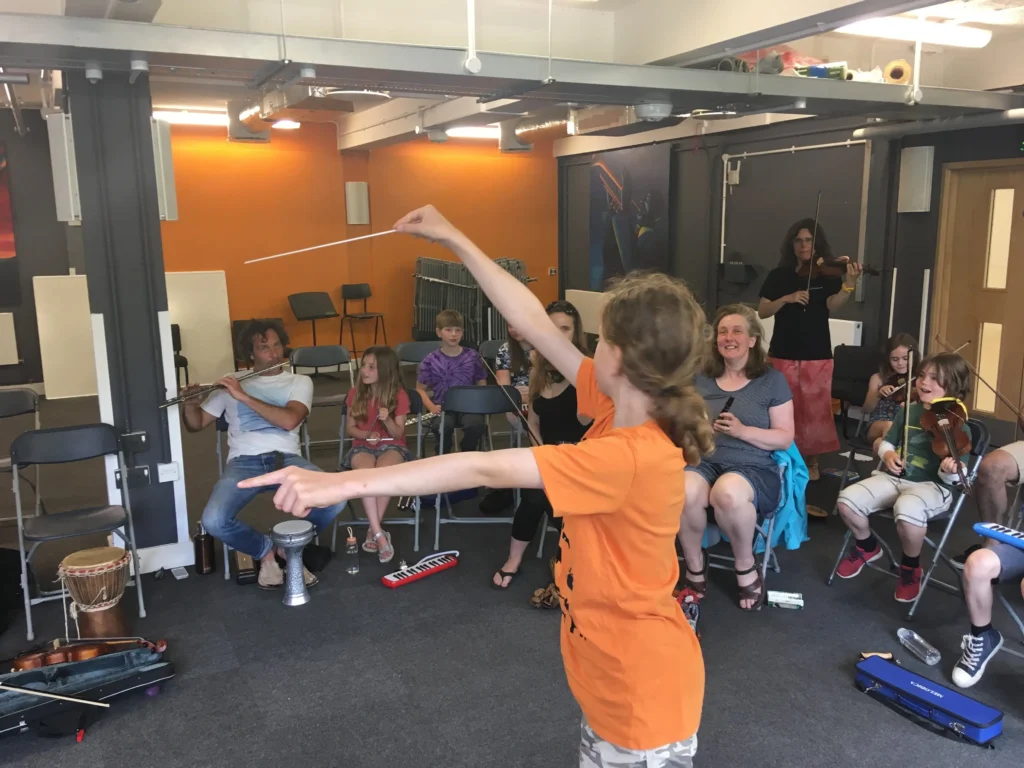As a reflective musician I spend a good deal of my time analysing what has gone on and thinking about what to do next. I am currently writing a book about my practice as a social musician and on this page will share some of that writing.
Here is a section on Conducting.


Conducting
Take a conductors baton and give it to someone, see what happens…
When preparing to lead a social music session I have learned to take a conducting baton with me – usually inside my accordion case. It is a magic wand. Literally.
I offer it up to someone and then ask them if they would like to conduct. I do not usually give any initial advice about what to do with it and, if in a context with elders, someone will have an idea as to what it is and what might be expected of the conductor. Sometimes they might suggest a song or a tune, sometimes they just start to wave it and I start to play. If others have instruments I encourage them to join in. I try to focus on the person with the baton and respond to their arm movements. I try to let them know that I am responding to them, and they are (to some extent) in control.
The idea of the conductor is such a loaded one in classical musical. The conductor is the controller, the person who makes the decisions, the person with the most power, the person who gets paid the most, the maestro. There are many articles, books, films etc about the history, minutiae and general maleness of conducting.
I have come to realise the agency and joy that can come from giving someone a baton and inviting them to become the conductor of a group. This applies to all ages, can also work without a baton and does not require any prior experience. It is a different experience from that normally thought of when mentioning the word conducting.
‘Conducting – The method of holding together an instrumental or choral force, and securing from it the most musical effect possible…’ is the definition from the Concise Oxford Dictionary of music. These two elements may be, at best, a by-product when I encourage the use of the baton and invite someone to conduct for the first time.
It was through working with The Aubergines Family Orchestra and making music in care homes and hospitals that I began to realise the wonderful benefits that can come from giving a baton to someone and then following what happens. There are no explanations, no expectations and no rules.